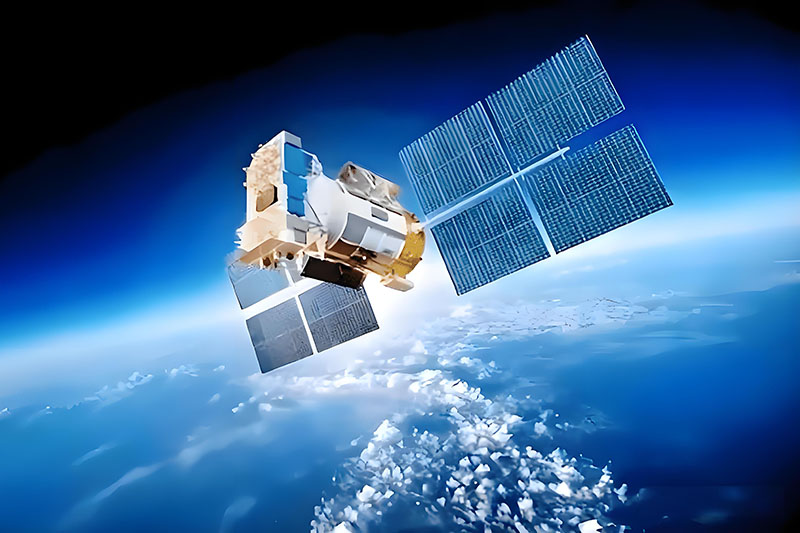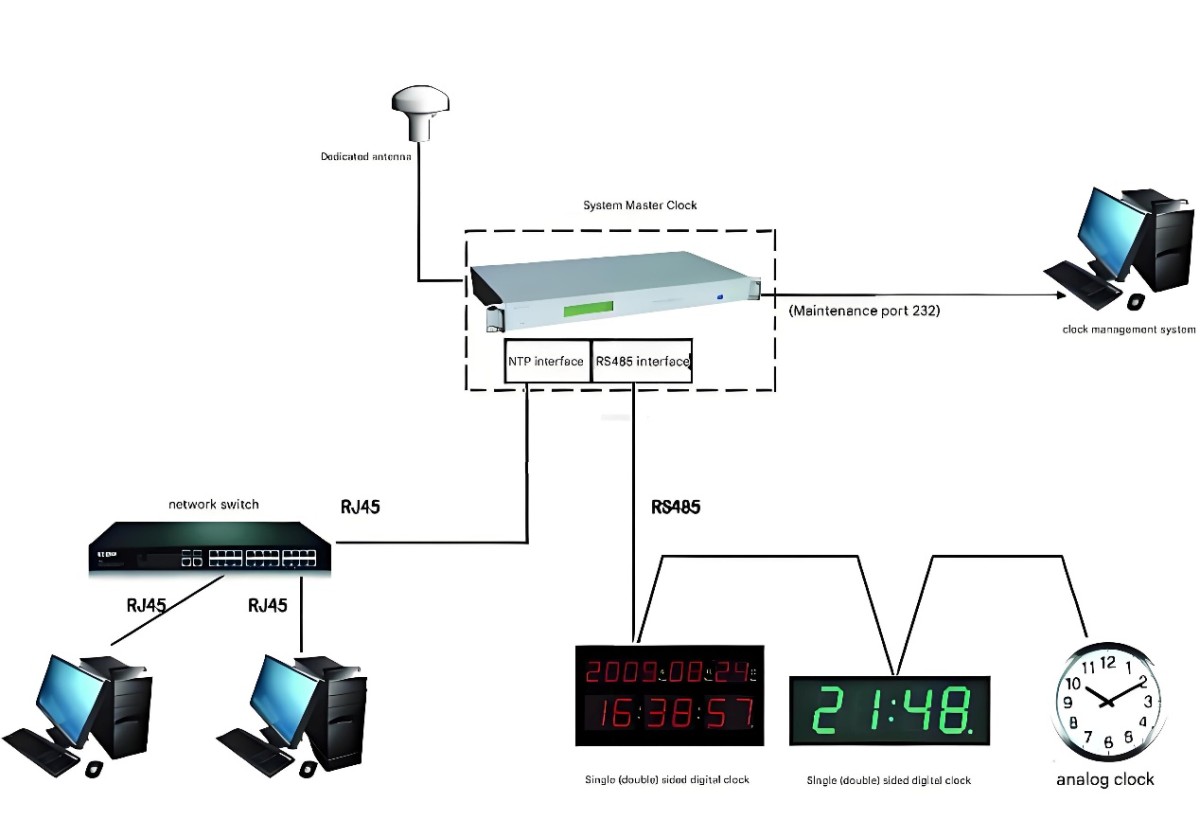
Application of Atomic Clocks in Satellite Synchronized Clock Systems
Atomic clocks serve as the core high-precision time reference in satellite synchronized clock systems, significantly enhancing the reliability, accuracy, and environmental adaptability of master-slave clock systems through integration with GPS/BeiDou satellite systems. Below is a detailed analysis of their application from technical architecture, performance optimization, and practical scenarios:

1.Technical Integration of Atomic Clocks in Master-Slave Systems
1. Dual-Source Redundancy Architecture
The master clock integrates a chip-scale rubidium atomic clock module and a satellite receiver, forming a dual-redundant "satellite timing + atomic clock holdover" system:
Under normal satellite signal conditions: The atomic clock continuously calibrates using GPS/BeiDou 1PPS (pulse-per-second) signals to eliminate long-term frequency drift.
During satellite signal outages: Automatically switches to autonomous atomic clock holdover mode, maintaining <1μs timekeeping error over 24 hours (10x more precise than traditional OCXOs).
Distributes timing signals via IEEE 1588v2 protocol, ensuring network-wide synchronization accuracy of ±100ns.
2. Modular Integration Innovations
Miniaturized atomic clocks (30×30×10mm) using MEMS vacuum packaging technology are embedded into the master clock’s mainboard:
Compatible with RS422/RS485 bus architectures, requiring no modification to existing wiring.
Operates in extreme temperatures (-40°C to +85°C), suitable for harsh environments like substations and tunnels.
Power consumption <2W (90% lower than traditional cesium clocks), enabling 24/7 continuous operation.
2. Performance Enhancements Enabled by Atomic Clocks
3. Optimized Application Scenarios
1. Power Grid Synchronization
In smart substations, atomic clock master units provide time references to PMUs via IRIG-B code:
Network-wide synchronization error <1μs, complying with IEC 61850-9-2 standards.
Maintains frequency stability <5e-12 even under strong electromagnetic interference.
2. Rail Transit Precision Scheduling
Atomic-enhanced master clocks in metro signaling systems:
Achieve 10ns-level train positioning synchronization for CBTC (Communication-Based Train Control) systems.
Accumulate <10μs time deviation over 30 days in satellite-denied tunnels.
3. Financial Trading Systems
Atomic clock clusters in stock exchanges:
Enable ±50ns synchronization across data centers.
Deliver nanosecond timestamps via NTPv4, meeting MiFID II regulatory requirements.
4. Technological Evolution and Standardization
Optical Lattice Clock R&D: ArctiTech’s lab prototype achieves 1e-16 frequency stability using strontium atoms, with plans for integration into 6th-gen master clocks by 2025.
Compliance: Systems fully adhere to GB/T 25931-2010 (precision clock synchronization protocol) and CMA certification.
Smart Maintenance: AI algorithms predict atomic clock drift trends, issuing 30-day calibration alerts to boost maintenance efficiency by 70%.
Conclusion
The deep integration of atomic clocks with satellite synchronization addresses the performance degradation of traditional systems in signal-blocked environments. By leveraging quantum precision measurement, master-slave clock systems achieve nanosecond-level synchronization accuracy. This "satellite-ground collaboration" architecture provides autonomous, high-reliability timekeeping solutions for industrial IoT, smart cities, and next-generation infrastructure.
MESSAGE
CONTACT US
Please use the form below to get in touch.
If you need a reply we will get in touch as soon as possible.

